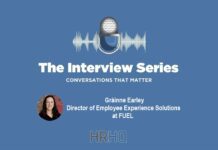by David Barrett, Chief Operating Officer of global assessment specialist cut-e.
When nearly everyone has a smartphone or a tablet, it makes sense not only to promote your jobs online but to allow candidates to apply via mobile devices. This offers the benefits of speed, convenience and privacy, which are important because job seekers believe they stand a better chance of being considered for a role if they apply as soon as it’s posted – and many candidates now prefer the ‘anonymity’ of applying from their mobile device rather than their company computer.
If you’re allowing mobile applications, why not allow mobile assessment? This means your candidates won’t have to switch devices to sit your tests. It puts them in control of when and where they participate, so they can interact with you at a time and place that suits them. Also, with mobile assessment, the tests tend to be shorter, which has the advantage of ‘reduced drop-out’. In other words, candidates are more likely to complete them. But the test still has to be psychometrically valid. Mobile devices can also speed up the process of video interviewing. As a result, you can now start to incorporate assessments and video interviews much earlier in your selection process. Minimal effort is required from the candidate and you’ll gain a rich source of data, which you can use to make a quick and informed decision about whether or not to progress that person through the application process.
Best practice is to allow prospective applicants to self-assess their suitability for a job before they apply. Realistic job previews, situational judgement and gamification tools enable potential applicants to see how their skills and abilities match against your available roles. They also enable you to showcase your employer brand, culture and values. If the individual feels unsuited to the role or your organisation, they won’t apply. That saves them – and you – time and effort. The great advantage of this is that it optimises the quality of the candidates who do apply. They make a conscious choice to proceed with their application, because they think they are well-matched to your requirements and your culture. As a result, your applicant pool is more likely to be populated with better-suited candidates.
Just like every previous generation, today’s talented individuals want to work for a reputable company. They want a job with a purpose, work-life balance, a chance to develop and control over their career. They also want to be treated with respect when they apply. That means you need to have an efficient and effective screening process that provides a positive candidate experience.
Choosing the right assessment option
A bewildering array of choice is available when it comes to selecting staff, including traditional assessments, video interviews, game-based assessments, virtual reality assessments, social media analysis tools and job navigators. The question to ask, to choose the best option, is: will this assessment tell you which candidates are the optimum match for the job? That is essentially what you need to answer.
In every role, there will be certain competencies and job-related attributes that you’d like recruits to possess – and there will also be particular values that you’d like them to have, to ensure they’ll fit the culture of your organisation. All of these factors can be easily defined and, if you can successfully assess them, you’ll appoint the right sort of people. In turn, that can help your organisation to achieve greater productivity, higher engagement and lower attrition.
However, you’ll need to create an efficient selection process which doesn’t disadvantage potential applicants or discriminate against any group. It has to be fair and free of any bias or adverse impact. Your assessments must not only be valid and reliable, they should feel relevant and appropriate to candidates. Test providers call this ‘face validity’, which simply means that the test should ‘look like’ it measures what it’s supposed to measure. You can’t simply create a Candy Crush-style game and use it for assessment. You need to choose the right tools and use them at the right stage of your hiring process.
With assessment, the goal is – and always has been – to find the optimum person-job match. However, the data gathered from assessments can also be used to create personal learning plans for individuals. Predictive talent analytics can also be generated by combining employee assessment results with existing talent and performance data. The additional insights gained from this can drive better talent decisions and help recruiters to identify high performers more consistently.














































